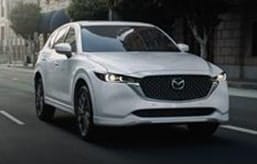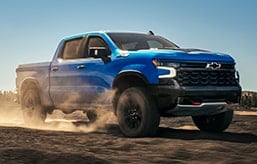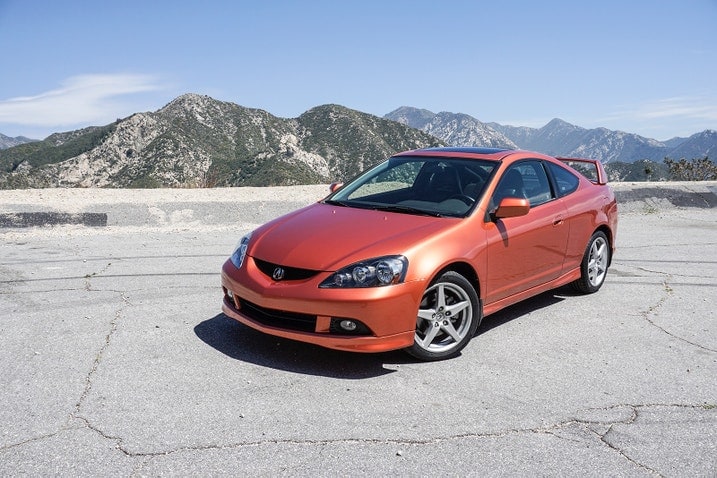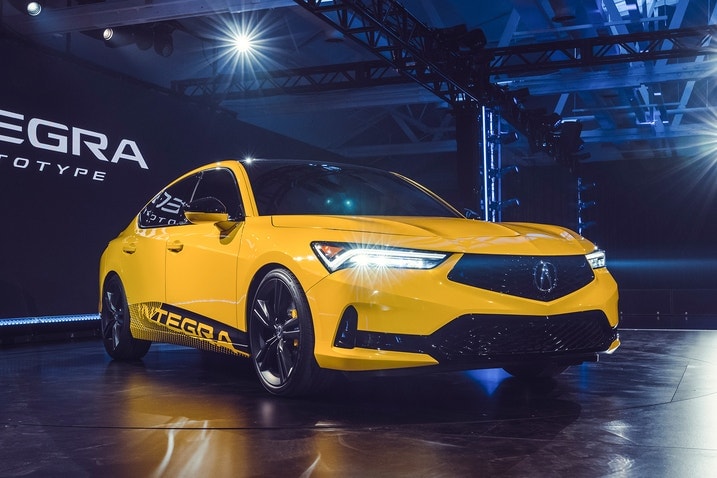- It needs to be fun to drive.
- It needs to be priced right.
- There needs to be high-performance Integra too.
What the New Acura Integra Needs to Be Successful
It can't just be good. It needs to be great.
The Acura Integra is something of an automotive icon. On the surface, it's just a compact car that was available for four generations in the United States that spanned the mid-1980s until 2006. It offered a fun driving experience at a reasonable price. But dig a bit deeper into the Integra's history and you'll see that it's been featured in the biggest car movies, displayed in the most illustrious car museums and inspired some of the world's most rabid fans.
Now Acura is reviving the Integra for 2023. Why is there such fervor over a car that ostensibly offered just a bit of cheap driving fun? And what does this new Integra need in order to both live up to the original and be a competitive pick for an enthusiast's car? Here are the Top 3 qualities that I think the new Integra needs.
No. 1: It has to be good to drive. Like, really good.
It's not a stretch to say that the 1990s Acura Integra is considered one of the best front-wheel-drive vehicles ever made. The Type R is on pretty much every Top 10 list of fun-to-drive front-wheel-drive cars and much of the standard Integra's success can be credited to how much fun it is from behind the wheel. Communicative steering, a high-revving engine and impressive handling all contribute to the entertainment of driving one. The new Integra will need much of that same charm to capture our hearts, and thankfully, it's on the right path.
The upcoming Integra will be based on the Honda Civic underneath and use the same turbocharged 1.5-liter engine that powers the Civic Si. In the Civic, that engine produces 200 horsepower and is paired to a slick-shifting six-speed manual transmission. If the base Integra is indeed based on the current Civic Si, it's got a fighting chance. The Civic Si is quick and engaging, and it's a comfortable daily driver.
No. 2: The price has to be right.
While they may be currently breaking records on all the online auction sites, Integras were not always so expensive. Back in the 1980s when the Integra debuted, starting prices were around the $10,000 mark. With inflation, that would be around $26,000 these days (depending on which online inflation calculator you use). That would be a pretty reasonable price for any new vehicle, especially from a luxury brand like Acura.
A more realistic expectation for the starting price of an Integra today, however, would be in the low $30,000s. A new Honda Civic Si with the optional summer tires and the destination fee checks in at $28,910. Add some luxury Acura touches and you're right around 30K. If base prices landed in that range, Acura could very well have a winner on its hands by competing with the Hyundai Elantra N ($32,945) and the Mazda 3 Turbo hatchback ($32,565).
Going a little further, the Type R was priced around $22,000 when it debuted in the 1990s, which would come out to about $40,000 in 2022 dollars. Just a few short years ago, the Honda Civic Type R had a starting MSRP of $37,990 (including destination). If a high-performance Type S model eventually debuts, and Acura can keep prices below $40,000, sales would soar. Base and midlevel versions of the Mercedes A-Class, the Lexus IS 350 and the Cadillac AT4 fall in the $35K-$45K range, and by undercutting those offerings, the Integra would be a shining star.
No. 3: We need a Type R.
The high-performance Integra doesn't have to be called a Type R necessarily, but it needs to embody the same spirit. The Type R was the highest-performance version of the Acura Integra. It set itself apart from the standard Integra by offering more horsepower via a higher-revving engine, a lower curb weight, fewer creature comforts (like no sunroof), bigger brakes, and upgrades to the suspension. It also offered exclusive paint colors, unique seats, and special exterior treatments like a trim-specific spoiler.
Even if Acura sticks with the Type S naming convention it's currently using for its other models, it could still work — so long as it is more powerful, more focused on high-performance driving, and still comfortable enough to drive on a daily basis.
Some rumors have been flying that the Integra would take advantage of Acura's SH-AWD (Super Handling All-Wheel Drive) system for better performance, but Acura has shut those rumors down, stating the Integra will remain front-wheel drive. The previous-generation Civic Type R was FWD too, and it used a turbocharged 2.0-liter four-cylinder engine that produced over 300 hp. More than just powerful, the last-gen Type R was engaging, light on its feet and practical all at the same time. Seems like the Honda and Acura's engineers already have the recipe they need. They just need to repackage it properly and put a pretty bow on it.
Edmunds says
The Acura Integra name comes with high expectations. Integra owners and enthusiasts remember their cars fondly as reliable, enjoyable and comfortable transportation. The new Integra will have to capture that magic by paying proper homage to the old Type R, be appropriately priced, and provide a fun experience from behind the wheel. Luckily, the already excellent platform that the new Integra is built on gives it a big head start.







 by
by